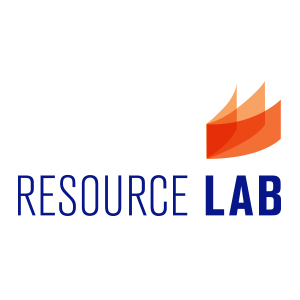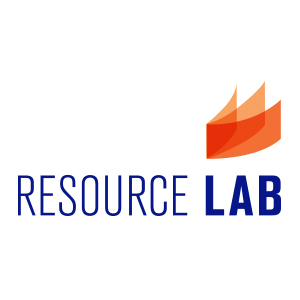
The Revenue Crisis
The traditional nonprofit revenue model is broken. Revenue formulas are out of date. Contributions just don’t flow in the same way. Some revenue taps have dried up. Others, such as government, are fading. Traditional methods don’t work as well. It’s time to reimagined the nonprofit revenue paradigm.
Attention and concern lately have focused on measuring results and impact. However, if we lack the resources to do the work, we get no results. Revenue always precedes results in priority.
And if revenue sources demand results but do not pay to evaluate and obtain results, we also, in a sense, get no results.
The need for additional revenue often focuses on fund-raising. Certainly, many nonprofits have other specific revenue sources, e.g. ticket sales, patient revenue, sliding scale fees. However, in large part, the preoccupation of Boards and EDs for additional revenue has been fund-raising.
New Thinking on Revenue
Recently there has been a whole spate of new thinking about revenue for nonprofits. Social entrepreneurship, for-profit subsidiaries, creative planned gifts, social impact bonds, triple bottom line investing, and many more ideas are stimulating thinking about revenue generation.
President Obama’s new Social Innovation Fund, part of the Corporation for National and Community Service, has $100 million in authorization. The Rockefeller Foundation promotes social impact bonds. Massachusetts has appropriated funds, a group has been selected to manage the investments and agencies have been chosen to help solve some intractable social problems.
Through the leadership here in Minnesota of Steven Rothchild, we have had government activity for an infusion of funds for both solutions to problems and paybacks on societal funds saved.
Articles in a number of publications recently motivated nonprofit leaders into thinking differently about revenue streams. Given the very tight contributed revenue picture, more nonprofit leaders have broadened their revenue horizons to search for other revenue streams that might exist for their particular nonprofit.
In fact, however, we need to think even more broadly. We need to think of
Resources—revenue, intellectual and real property, human energy, surpluses, stuff, things—what it takes in this new economy to get the job done.
What is Really Needed: The Resource Lab
In the same way that Benevon, nee “Raising More Money,” took a number of well-known, relatively conventional fundraising ideas and packaged them into a very successful, dynamic, paint-by-the-numbers development program for Boards and staff, what is now needed is a similar, broader gauged, more individualized custom program in resource generation, focused on the individual nonprofit and its unique circumstances through a series of well-designed steps.
 We’re calling it the Resource Lab, and it is a year-long peer program of two day-long bookends, separated by ten monthly 2.5 hour sessions in between, plus lots of interactive reading and learning throughout, all on generating resources for the specific nonprofits participating.
We’re calling it the Resource Lab, and it is a year-long peer program of two day-long bookends, separated by ten monthly 2.5 hour sessions in between, plus lots of interactive reading and learning throughout, all on generating resources for the specific nonprofits participating.
Ideally, CEOs, EDs, COOs, CFOs, VPD, DDs and Board members attend– the makings of a strategic leg-up in ensuring an organization’s long-term financial well-being.
The “peer” aspect implies that, perhaps, five organizations are represented by two or three leaders in these sessions. Three major reasons motivate such grouping: money saved as compared to retention of individual counsel; tuition allows three consultants and lots of resources to be included in each session; individual case studies from each organization enlighten all.
So?
The difference is that, to find needed resources, other factors must also change. Leadership needs an entirely new look. Brand, organizational positioning, maybe even nonprofit status, need to be examined in ways not imagined.
After assessment of existing strategy and revenue stream components, a baseline determines direction. Organizations sometimes miss whole groups of donors and former donors, or their systems are not up to providing the segmentation needed for increased donation revenue.
Segmentation ensures not just donations but all sorts of others ways “donors” might bring resources to the nonprofit. This then starts the new process of transformational leadership and positioning for the nonprofit.
Ways of giving to organizations are often under-optimized, given a lack of staff or imagination. Explorations of options will produce exceptional opportunity, especially once blinders about constituency come off. A charitable gift is only one way; there are many other ways to obtain the desired resources.
A next phase is to explore fee structures and related business opportunities just hiding in plain sight. Earned revenue can often be increased without affecting clients and/or those utilizing the services, facilities or programs of the nonprofit. New ways to earn income, perhaps with those newly defined donors often await investigation.
What follows is focused on other forms of entrepreneur-type innovation, up-scaling to increase revenue, inspiring “investors” to pay for performance, participating in an impact bond project, sharing government revenue savings, foundation incentive payments and program related investments, and a wide variety of other ideas now in play.
At the end of the year program, a number of things should be happening or will happen. All along the year, participants will be encouraged to make changes, to innovate and to measure. At the end, a multiyear, disciplined, resources plan will have been done for each group. After twelve months, change will be demonstrable. In three years, resources will flow from much more diversified sources, more reliably and hopefully increasing at a steady pace.
What do you think? See our new site.
We invite comments. What appeals to you? What does not? Is a year commitment too long? Too short? Would you attend? We really would love to hear from you. Let us know.
Comment below or send your thoughts and questions to me at jim(@)toscanoadvisors.com

